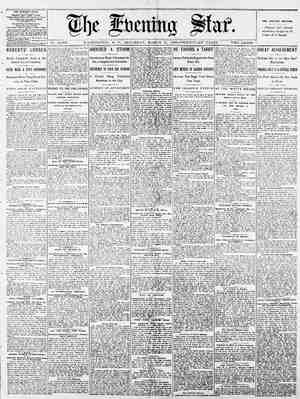Grand Rapids Herald-Review Newspaper, March 31, 1900, Page 13
You have reached the hourly page view limit. Unlock higher limit to our entire archive!
Subscribers enjoy higher page view limit, downloads, and exclusive features.
se wT tow GRAND KAPIDS, ITASCA COUNTY, MINNESOTA. 3 NORTHEAST SUB-EXPERIMENT FARM. An Official Report Showing from Thorough Tests the Fer- tility of Itasca County Soil, and Many Interesting and Instructive Facts Connected Therewith. THE TESTS UNDER STATE SUPERVISION. Experiments Conducted Within Two Miles of Grand Rapids for a Series of Years on Land Scarcely as Good as the Average Soil in Itasca County. HE Northeast Sub-Experiment T Farm of the University of Min- nesota is owned and managed by the state of Minnesota, and is east of Grand Rapids at a distance of less than two miles from town. The state acquired title to this property in July, 1896, at which time seventy acres of it land first opened is such as usually grows jack pine and Norway pine, and represents the poorest class of soils. This fact is important for the reason that the jack pine and Norway pine lands of northern Minnesota are known to be very much inferior to the soil where white pine grows. Fortunately THE HOUSE ON THE NORTHEAST SUB-EXPERIMENT FARM. was in crop, and proceeded at once with the work of clearing up more land. The entire tract consists of 375 acres lying along the west bank of Prairie river. Since purchasing the farm the state has increased the culti- vated area to 120 acres. A report pre- pared by Superintendent Herman H. Chapman has just been published, and shows the results of the tests made, and is the first report on the work of this farm that has been made officially since the tests have progressed far enough to give comprehensive knowl- edge of the productive capacity of the land. The object in establishing this state farm is officially announced as being ‘‘to study the agricultural possi- bilities and investigate the problems of the nortbern Minnesota pine re- gion.”’ The report states that the the most of the pine in this region is white pine. Therefore it cannot be claimed that the _experiments and tests at the state farm were made on soil better than the average in Itasca county. The report refers to the clay subsoil on the farm as being of great value. The timber and land cruisers all agree that in this region all of the white pine districts and the greater portion of the other lands have this clay subsoil. : THE COST OF CLEARING LAND. The report shows that the land that was cleared by the state was cleared by cutting the timber, burning the brush and pulling the stumps, at a cost of $30 per acre. timber and cordwood taken’ from the land is not stated, although settlers usually expect to pay nearly the entire cost of clearing land by the sale of the timber cut while the work is in prog- ress. The report says: “The cost was higher tan if slower methods had been used. — It is seldom best to pull stumps at once, provided they can be prevented from sprouting. Stumps of deciduous trees, commonly called hardwood to distinguish them from evergreens, rot in four to seven years. Pine stumps are slow to rot, as the resin they contain preserves them from decay, but if allowed to stand a few years the smaller roots rot off and they bring up much less dirt with them when pulled. To keep down the sprouts and get some return from the land while this rotting process is go- ing on, it is wise wo seed down and pasture the fieid, or,.when the stumps are not too thick, to plow between them for grain crops. Having obtained ground suited to its immediate needs, the Northeast station can now prac- tice more economical methods of clear- ing. The cost of complete clearing will vary with the methods employed, length of time consumed, and with the character of the timber and soil. For better soils it will range between $6 and $30 per acre, although some A VIEW ON LELAND AVENUE, GRAND RAPIDS. The value of the- : |



